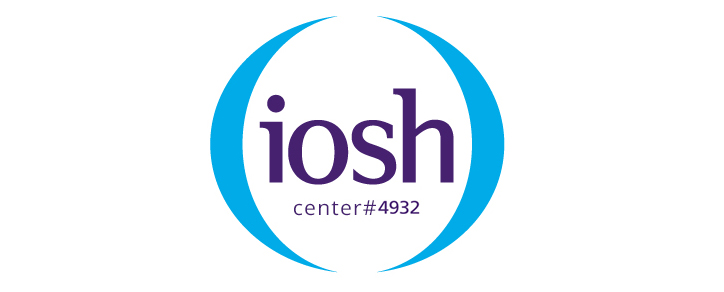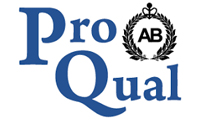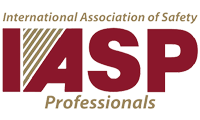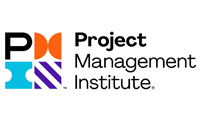We face potential threats every day. Some may be relatively harmless, while others may be very dangerous, even fatal. The ability to identify potential threats and implement preventative measures is crucial for any business owner. This article will define hazards, describe several categories of hazards, and provide some methods for mitigating those risks
What exactly is Hazard?
In general, anything that poses a threat to human health, property, or the natural world is considered a danger or potential hazard. A key point to remember is that a threat need not be a physical one, but could instead be chemical, biological, or psychological. Both natural and artificial settings can have potentially harmful elements and circumstances.
Risk
The danger is the potential for injury or loss as a result of exposure to a threat. The level of risk is based on the seriousness of the potential harm or damage and the likelihood that it will occur, therefore it’s vital to keep in mind that not all dangers will lead to accidents or incidents.
Distinction Between Hazard vs Risk
The distinction between risk and hazard is crucial. If anything has the potential to harm or damage someone, we call that a danger; if something does harm or damage, we call it a risk. The risk of drowning in a pool, for instance, depends on the depth of the water, whether or not lifeguards are present, and the swimmer’s skill level.
Evaluation of Hazard Risk
Assessing the risks associated with potential dangers entails searching for, rating, and eliminating those dangers. It’s a preventative method for managing health and safety that helps find problems before they arise.
Taking stock of the dangers present at your workplace is the first step in conducting a risk assessment. That can be achieved by careful observation of the workplace in search of dangers. The risks associated with each hazard must be evaluated after they have been identified.
Next, we must take measures to mitigate the effects of each threat. A few examples of such measures are standard operating procedures, PPE, and engineering controls.
Workplace safety management relies heavily on accurate hazard risk assessments. Controlling risks and avoiding accidents can be achieved by first recognizing potential dangers and then determining how severe those dangers are.
There are four primary categories of workplace hazards:
- Physical Hazard
- chemicals Hazard
- Biological Hazard
- Psychological Hazard
Physical Hazard and Precautions
Threats posed by a substance or an object are said to be “physical” if they are caused by those attributes. Dangers can be observed or unseen, organic or artificial, and widespread or localized.
The workplace may be unsafe due to a wide variety of physical dangers. To name a few of the most typical:
Falls- One of the leading causes of serious injury and death on the job falls from heights. When working at heights, workers should always take precautions and utilize safety gear.
Slips stumble and fall- These are also common contributors to occupational injuries. As such, it is incumbent upon workers to be alert to potential dangers in the workplace and to take the necessary safety measures to avoid them.
Exposure to hazardous materials – Workers may be exposed to hazardous materials including chemicals, dust, or fumes on the job. Avoiding exposure requires a commitment to safe work practices and the use of appropriate PPE.
Ergonomic’s Hazard – Carpal tunnel syndrome and back injuries are only two examples of musculoskeletal problems that can result from poor ergonomics. Employees should be alert to ergonomic risks in the workplace and take measures to mitigate them.
Noise-Intense noise levels might damage your hearing over time. When working in extremely loud conditions, workers should always utilize hearing protection.
Extreme heat or cold- can produce heat or cold stress, respectively. Workers need to take safety measures to prevent overexposure to hot environments.
Brightness- Eye strain and other visual difficulties might be brought on by a lack of proper illumination. The illumination in the workplace should be sufficient for the workers.
Electrical Effects- Stun, burn, or even die from an electrical shock if you’re not careful around live wires. There may be electrical hazards in the workplace, and workers should be aware of them.
Fire- Since it can travel so quickly and harm so much, fire ranks high on the list of potentially fatal natural disasters. Keep your cool and leave the area promptly if you find yourself near a fire. Don’t waste your time trying to put out the fire on your own; dial 911 instead.
Floods- Other than fires, floods are a severe physical threat that can strike with little to no warning. If you reside in a flood-prone area, you should prepare an evacuation route in advance. Avoid driving through floodwaters and go for higher land to wait on rescuers.
Natural Disasters-Besides fires and floods, earthquakes are potentially devastating natural disasters. Being prepared for an earthquake is crucial if you live in an earthquake-prone location. When the shaking starts, get down on the ground, cover your head, and cling on for dear life. Then, leave the area as soon as possible and stay out until officials say it is safe to return.
Many workplaces have the potential for physical harm. Workers should be alert to the risks and take precautions against them.
Chemical Hazards and Control Procedures
Chemical risks can come in many different forms and are prevalent in the workplace. While some of these risks are more frequent, others may be more dangerous. It’s crucial to be aware of all the potential chemical risks in your job so that you can take preventative measures to safeguard both yourself and your coworkers.The following are the most typical chemical hazards you could run into at work:
-
Lead
The neurological system, kidneys, and brain can all be harmed by lead. Lead exposure can result in behavioral issues, learning difficulties, and even death. There is no level of lead exposure that is safe, so prevention measures must be taken.
Paint, plumbing, and even some types of food contain lead, as do many other things. Children are most frequently exposed to lead, and they can get exposed through ingesting dust or soil that contains lead. Adults may also be exposed to lead at work or via pastimes like soldering or using lead-based paint.
-
Bases And Acids
Chemicals that contain acids and bases can be quite harmful. They may result in corrosion, irritability, and burns. It is crucial to get medical help right once when you come into touch with an acid or a base.
In industrial and manufacturing environments, acids and bases are frequently used. It is crucial to take safety precautions if you operate with these compounds. Put on protective gear, such as gloves and a face mask.
-
Solids and Liquids that are Flammable
Another prevalent sort of chemical hazard is flammable liquids. Working with these substances can be extremely dangerous because they rapidly catch fire. It’s crucial to get help right away if you come into touch with a flammable liquid.
Another prevalent sort of chemical hazard is flammable solids. They can be produced using a variety of materials, such as chemicals, polymers, and metals. These materials have a high potential for ignition and rapid burning when heated. In the workplace, this can pose a major risk, so it’s crucial to take preventative measures.
You can take a few steps to prevent flammable solids from catching fire. First, keep children away from heat sources at all times. Second, make sure they are kept in a cool, dry location. They will be less likely to catch fire as a result of this.
When working with flammable solids, you should always wear the appropriate safety clothing. This covers items like face masks, goggles, and gloves.
-
Harmful Gases
Gases that are toxic can be quite harmful. They may result in breathing issues, annoyance, or even death. It’s critical to understand safe handling and storage procedures for dangerous gases.
Always keep toxic gases in a well-ventilated space while storing them. They ought to be stored in a dedicated container if at all possible. When handling dangerous gases, wear protective clothing at all times. Make sure you have an emergency plan in place in case of a leak if you are working with a lot of gas.
-
Corrosive substances
Burns, inflammation, and corrosion can all be brought on by corrosive chemicals. Many common household items, like drain cleaners and oven cleaners, contain corrosives. Additionally hazardous is the inhalation of corrosive vapors. Rinse the afflicted area with cool water for at least 15 minutes if you come in contact with something caustic.
-
Harmful Metals
Toxic metals can enter the body in a variety of ways. They can cause lung issues when inhaled, and they can irritate or burn the skin when they come in touch with it. They can result in major digestive problems if consumed. Exposure to these drugs occasionally has a fatal outcome.
It can be challenging to spot harmful metals since they might not be readily apparent. But some typical indications of exposure include gastrointestinal upset, respiratory problems, and skin rashes. It’s crucial to get medical help right away if you think you’ve been exposed to a poisonous metal.
-
Radioactive Substances
Radiation exposure can have a variety of negative health impacts, from small skin rashes to fatalities. The amount of radiation exposure and the duration of exposure determine how severe the health impacts will be. Even brief exposures to high radiation levels can have detrimental consequences on health.
-
Mercury
Heavy metal mercury is toxic to people. It can harm the kidneys, lungs, and brain. Consuming mercury-containing fish or coming into contact with mercury-containing goods like thermometers can expose one to mercury. The environment may also be exposed to mercury from sources such as coal-fired power plants.
It is critical to take safety precautions if you operate with any of these compounds. Make sure to thoroughly read any warning labels and adhere to all safety precautions. Always put your safety first!
Chemical risks can come in many different forms and be prevalent in the workplace. Others may be more harmful and some of these risks are more frequent than others. It’s critical to be aware of all the potential chemical risks in your job so that you can take precautions for both your own health and safety and your coworkers.
Biohazards and safety measures
Biological risks can cause injury or damage to individuals, property, or the environment if they are exposed to a biological agent. Biological dangers can manifest in numerous ways, including but not limited to the following:
-
Microorganisms
Germs are one of the most common risks in the workplace. Bacteria are little, single-celled organisms capable of causing disease. Some bacteria are beneficial to human health, while others are harmful.
Bacteria can enter our bodies via cuts and open wounds, as well as the mouth and nose. Once inside the body, bacteria can grow and cause disease.
Bacterial infections can induce a number of symptoms, such as fever, vomiting, diarrhea, and abdominal pain, depending on the type of bacteria involved. In extreme cases, bacterial infections may be lethal.
-
Fungi:
Fungi are a type of germ that can infect humans. These infections can range from trivial to deadly in intensity. Besides soil, water, and plants, fungi can be found in numerous other environments. Some fungi are capable of infecting healthy individuals with the disease.
Fungus infections can be difficult to treat since fungi can exist within the human body and treatments do not always entirely remove them. In certain instances, surgery may be required to remove the damaged tissue. Immune-compromised individuals are more prone to fungal infections.
If you suspect a fungal infection, you must see a doctor in order to receive the proper treatment. Without prompt treatment, fungal infections can become severe and even lethal.
-
Viruses
Small infectious particles known as viruses can replicate within the cells of living organisms. From the common cold to more severe disorders such as AIDS, viruses can cause a variety of diseases in humans. The vast majority of viruses are harmless, but a few are lethal. Although viral illnesses cannot be cured, certain viruses, such as HIV and influenza, can be treated.
DNA viruses and RNA viruses are the two fundamental types of viruses. DNA viruses utilize deoxyribonucleic acid in their genetic material (DNA). RNA viruses contain genetic material based on ribonucleic acid (RNA).
-
Protozoa
Protozoa provide a severe biological concern. They are responsible for the propagation of diseases such as giardiasis, amoebiasis, and malaria. In addition, epidemics of gastrointestinal diseases in water and food supplies have been linked to protozoa. Protozoa can occasionally even be lethal.
You can take a number of precautions against protozoa. First, ensure that your dish is adequately prepared. Before ingesting water, it is essential to boil or filter it, as water pollution commonly includes protozoa. Additionally, you need to avoid contaminated water and soil. Carefully wash your hands after coming into contact with potentially harmful substances. Finally, avoid mosquito bites if you are traveling to a place where protozoa are abundant, as some protozoa can be transmitted by mosquito bites.
You can protect yourself from the dangers of protozoa by remembering these simple tips. However, bear in mind that protozoa can pose a considerable risk; if you have any concerns, you should always consult a healthcare expert.
-
Parasites
Parasites occur in a number of shapes and inhabit a variety of environments. Parasites can cause a variety of diseases, including some that are fatal.
The majority of individuals believe that parasites only affect animals, although this is not always the case. Humans can be infected by several parasites, some of which are quite dangerous.
By being aware of these biological hazards, you may protect yourself from potential health risks and prevent them from occurring. If you suspect you may have been exposed to any of these dangers, you must consult a physician immediately.
Psychological Hazards and Prevention Strategies
Psychological risks are those that, when exposed to a psychological stressor, can injure or damage persons, property, or the environment. There are several examples of psychological risks, such as:
-
Bullying
Bullying at work can result in a variety of psychological risks. The first risk is that it might cause tension. Your mental health and general well-being may suffer if you are the target of bullying regularly. You might start to experience anxiety, depression, or even suicidal thoughts. Bullying can also lead to substance abuse if you’re not careful.
People who have been bullied frequently use drugs or alcohol to ease their anguish.
Bullying at work has the potential to make people feel isolated from others, which is another psychological risk. You may begin to withdraw from social situations if you are routinely made fun of and made to feel inadequate. You can develop a fear of speaking up or taking part in events because you don’t want to embarrass yourself. This may result in feelings of isolation and a sense that you have no one to turn to.
A few things can be done if you or someone you know is being bullied at work. Initially, make an effort to speak with the bully. Even if it could be challenging, it’s crucial to make an effort to fix the problem. If that doesn’t work, you can speak with your supervisor or the human resources division.They can assist with the investigation and, if necessary, with taking appropriate action. Finally, you could also look for assistance from a training institutes or trainers. They can offer you advice and support to help you deal with the circumstance.
-
Harassment
It happens frequently at work these days. When a lewd remark is directed at you from the other side of the room, you are sitting in your chair and going about your business. You are paralyzed with shock and unsure of how to respond. This is but one illustration of the numerous ways in which workplace harassment can occur.
There are various sorts of workplace harassment in addition to sexual harassment, which is the most prevalent. These include, but are not limited to, harassment based on race, religion, or handicap. An individual’s mental health may be severely impacted by workplace harassment. Post-traumatic stress disorder, anxiety, and depression can result from it (PTSD).
You must seek assistance if you are being harassed at work. Discuss the situation with a family member or friend you can trust. To cope with the psychological impacts of workplace harassment, you can also get in touch with a therapist or counselor who is qualified to do so. Bear in mind that you are not acting alone. If you ask for assistance, it is there for you.
-
Tension
The most significant psychological risk at work is stress. Numerous issues, including anxiety, depression, gastrointestinal issues, headaches, heart disease, sleep disturbances, and stroke, might result from it.
Stress in the office can be brought on by a variety of factors, including long hours, pressed deadlines, heavy workloads, job uncertainty, and disagreements with coworkers.
You can take some actions to reduce stress at work. These consist of:
- Throughout the day, taking pauses
- Eating nutritious food
- Doing regular exercise
- Getting sufficient rest
- Avoiding alcohol and coffee
- Taking up relaxing exercises like yoga or meditation
It’s critical to get expert assistance from a mental health professional if you’re experiencing stress overload. Stress can cause major issues at work and in your personal life if it is not treated.
-
Violation
A physical or psychological act of aggression with the intent to cause harm or death is referred to as violence. It might happen at work, at home, or out in public. Violence is a significant contributor to workplace fatalities and injuries, according to the National Institute for Occupational Safety and Health (NIOSH). It ranks second only to auto accidents as the biggest cause of death for American employees.
Workplace bullying, harassment, and exposure to local violence are just a few of the many reasons that might cause violence on the job. However, a history of hostility or violence is one of the most significant risk factors. This includes a background of assault, domestic abuse, or other violent offenses.
Before there is workplace violence, it is crucial to seek care from a mental health expert if you have a history of violence or hostility. To deal with rage and aggressiveness healthily, there are numerous resources accessible. You can stop workplace violence in its tracks with the correct help.
Order Of Control Measures For Hazard
There are numerous control measures available for mitigating the risks posed by potential hazards. The most appropriate control measure will depend on the nature of the hazard at hand. Common control measures include, but are not limited to, the following:
- Technical controls
- Administrative controls
- Personal Protective Equipment
- Mechanical Controls
Technical Controls:
Engineering controls try to get rid of or lessen exposure to a hazard by making changes to the work environment. Engineering controls include, but are not limited to, the following examples:
Local exhaust ventilation
Machine protections
Guardrails
Administrative Procedures
By changing the way work is done, administrative controls try to get rid of or reduce exposure to danger. Among other administrative controls, the following are examples:
Job mobility
Occupational policies and procedures
Personal Protective Equipment
Personal protective equipment (PPE) is clothing, equipment, or a device used by a worker to protect him or her from occupational hazards. Among the examples of PPE are, but are not limited to:
Safety hats
Security glasses
Earplugs
Protective attire
You may establish a safer workplace for yourself and your coworkers if you comprehend what a hazard is, the many types of hazards, and the numerous control methods that can be used to mitigate these risks.
Conclusion
All work settings contain hazards, but you can build a safer workplace by understanding what they are and how to manage them. It is essential to always foster a safe and healthy workplace culture. By doing so, you may contribute to ensuring everyone’s safety and health on the job. Please contact your local health and safety training providers if you have any questions or would like more information regarding hazard control.








